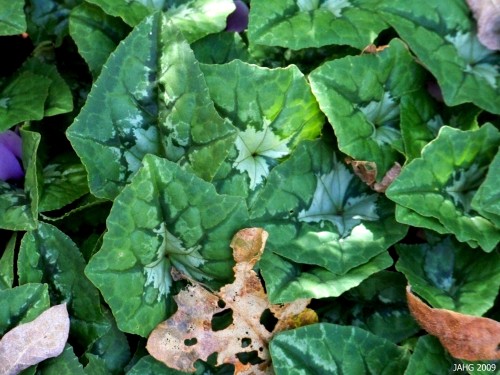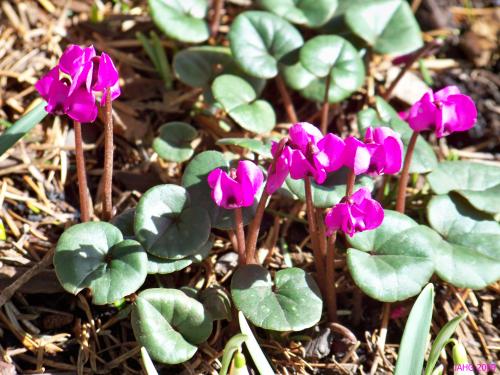This winter has been remarkably hard for plants. It started with a terrible and extreme cold snap in November before many plants had totally hardened off for the winter. The problem at that time was the cold came before the snow which protects more tender plants. On Wednesday morning I woke up to look out of my bedroom window to see an unexpected snow storm had dumped a large amount of snow. The cold came with winds the next day, but many plants this time are protected with a blanket of snow. By the time the snow stopped for the day there was about 30cm.(1ft.) on the ground.
In the afternoon there was even more snow and I and many others had started to shovel out paths and sidewalks. Trucks were up and down salting streets. The winds had picked up and with the strong breeze can the chill factor overnight. The temperature dipped down to -6 c. (20 f.) but the wind chill was -16 c (3 f.), an all time record for this time of year. With the roads being in dangerous condition I decided to stay at home until Friday afternoon. By that time the melt was on and snow piled high in parking lots.
The piles of snow can take a while to melt and during that time damage the plants that are covered by it. This is particularly true in the large parking lots where snow is not removed and is just pushed out of the way.
I know this year has been cooler already that last year. The buds on the Climbing Hydrangea by the gate were expanding and I was checking to see if the Forsythia was ready to bloom yet. Last year at this time were well in advance in the garden.
The Annual flower count starts March 1st and lasts until the 7th here every year, it should be a challenge this year to find the billions which are counted every year.Last year they had a record number. There is more inclement weather forecast for tonight and the rest of the week.
I mainly worry about those plants that made through the first cold in November and have now been hit again. The damage to broad-leaved evergreens is especially apparent with many of the larger leaved Rhododendrons looking sad .
The forecast for tonight is possibly more snow and the roads will be slippery in spots for sure. We gardeners are always trying to push the boundaries of what we can grow in our area, here it is more tender and tropical plants people want in gardens. When we have unusually cold snaps like this it reminds us how lucky we are that it does not last for more than a few days at a time.
Counting the Days of Flowers:
Victoria really does have a flower count every year: http://www.flowercount.com/
Victoria snow storm pictures from last week: http://www.howlabit.net/gallery2/main.php?g2_itemId=2575
Victoria during the storm is not safe: http://www.youtube.com/watch?v=D03rK2sdEeo





































 Stumble It!
Stumble It!






